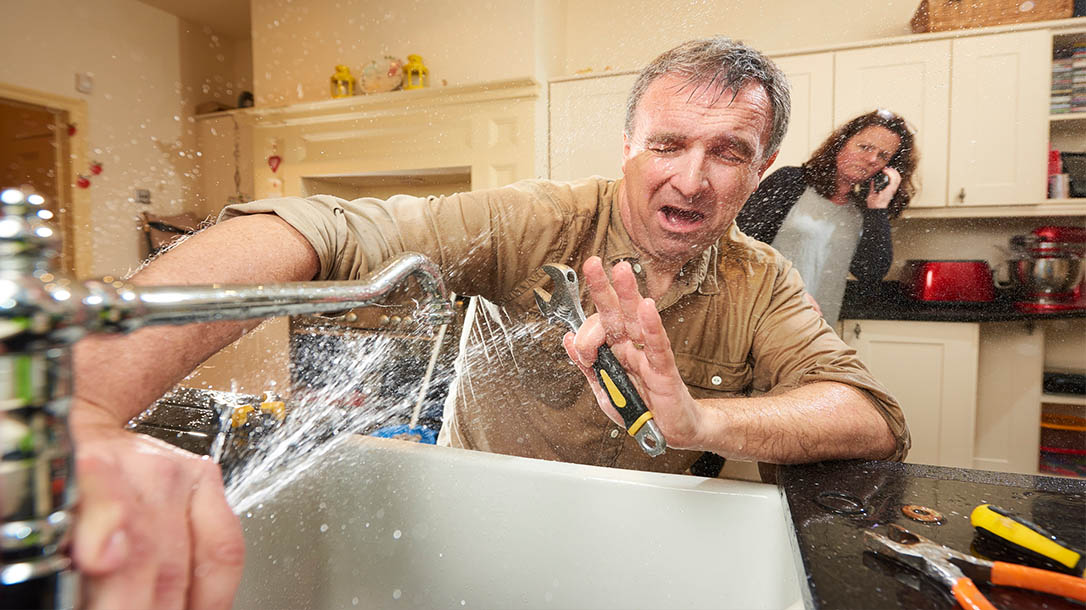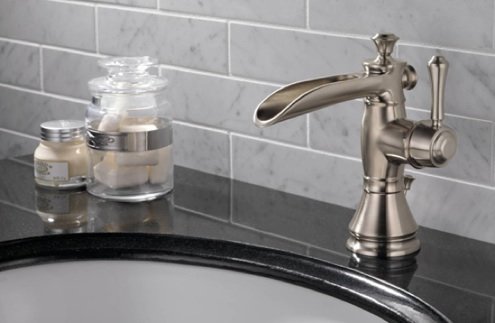Causes Why It's Vital to Resolve a Leaking Faucet
Causes Why It's Vital to Resolve a Leaking Faucet
Blog Article
We've discovered the article pertaining to Water Dripping from Faucet: Why and How to Fix directly below on the web and thought it made good sense to talk about it with you in this article.

Trickling faucets may feel like a minor hassle, but their impact goes beyond simply the inconvenience of the audio. From drainage to incurring unneeded financial prices and health risks, overlooking a dripping tap can bring about numerous effects. In this write-up, we'll delve into why it's important to address this typical household issue immediately and successfully.
Wastefulness of Water
Ecological Influence
Leaking taps add significantly to water wastage. According to the Environmental Protection Agency (EPA), a single faucet trickling at one drip per second can waste more than 3,000 gallons of water per year. This not only pressures water sources however also affects communities and wildlife dependent on them.
Step-by-Step Overview to Taking Care Of a Dripping Faucet
Devices Needed
Before attempting to repair a dripping tap, gather the required devices, consisting of an adjustable wrench, screwdrivers, substitute parts (such as washers or cartridges), and plumber's tape.
Common Tap Issues and Their Solutions
Identify the sort of faucet and the certain concern causing the drip. Typical problems consist of damaged washers, corroded shutoff seats, or faulty O-rings. Refer to supplier instructions or on the internet tutorials for detailed advice on repair services.
Financial Expenses
Raised Water Bills
Beyond the ecological effect, dripping taps can blow up water costs significantly. The collected wastefulness gradually equates right into higher utility costs, which could have been prevented with timely repair services.
Prospective Property Damages
Additionally, long term trickling can bring about harm to fixtures and surface areas surrounding the tap. Water accumulation can cause discoloration, rust, and even architectural concerns if left ignored, leading to added repair work prices.
Wellness Worries
Mold And Mildew and Mold Development
The constant visibility of moisture from a dripping faucet produces an ideal environment for mold and mildew and mold development. These fungis not only endanger indoor air quality however additionally present health threats, particularly for individuals with breathing problems or allergic reactions.
Waterborne Conditions
Stagnant water in leaking faucets can end up being a breeding ground for bacteria and various other microorganisms, increasing the risk of waterborne diseases. Pollutants such as Legionella microorganisms grow in stagnant water, possibly resulting in significant health problems when ingested or breathed in.
DIY vs. Expert Fixing
Advantages and disadvantages of Do It Yourself Repair Service
While some may attempt to take care of a dripping faucet themselves, do it yourself fixings feature their own collection of difficulties. Without appropriate knowledge and tools, DIY efforts can exacerbate the problem or bring about incomplete repair work, extending the trouble.
Benefits of Working With a Professional Plumber
Hiring a professional plumber makes certain that the underlying source of the dripping tap is dealt with successfully. Plumbers possess the experience and equipment to identify and repair tap issues successfully, saving time and decreasing the risk of more damage.
Ecological Duty
Specific Contribution to Preservation
Taking duty for fixing leaking faucets lines up with wider efforts toward water conservation and ecological sustainability. Every person's activities jointly make a substantial influence on protecting precious sources.
Sustainable Living Practices
By prioritizing prompt repair work and embracing water-saving behaviors, people contribute to sustainable living techniques that benefit both existing and future generations.
Preventive Measures
Routine Maintenance Tips
To avoid dripping faucets, execute routine upkeep such as cleaning aerators, checking for leaks, and changing worn-out parts immediately. In addition, take into consideration installing water-saving tools or updating to more reliable components.
Value of Prompt Fixes
Resolving dripping taps as soon as they're discovered stops additional water waste and possible damage, inevitably conserving both water and cash over time.
Influence On Building Worth
Perception of Well-Maintained Property
Maintaining a residential or commercial property in good condition, consisting of dealing with upkeep concerns like trickling faucets, boosts its viewed value and charm amongst prospective customers or renters.
Influence on Resale Value
Residences with well-kept plumbing components, consisting of taps, command higher resale worths in the property market. Dealing with trickling faucets can add to a positive impression throughout residential property examinations and negotiations.
Final thought
Attending to a dripping tap goes beyond simple comfort; it's a vital action towards saving water, decreasing monetary expenses, and protecting wellness and property. Whether with DIY repair work or expert assistance, acting to deal with leaking faucets is a little yet impactful method to promote responsible stewardship of resources and add to a much healthier, more lasting future.
How to Fix a Dripping or Leaky Faucet
A leaking faucet is one of the most common problems that homeowners encounter, but it being commonplace doesn’t make it any less annoying. The constant drip drip drip of a leaking bathtub faucet, showerhead, or sink tap can disturb your home’s serenity. Left neglected, a dripping faucet can also result in higher water bills and discoloration or mold growth in your sink or plumbing fixtures.
Fortunately, you don’t have to be a trained plumber to know how to stop a dripping faucet. With some basic tools, replacement parts, and a little patience, leaky faucet repair is a breeze. In this article, we’ll explain what causes dripping faucets and how you can fix them.
What Causes a Leaking Faucet?
Kitchen and bathroom faucets come in all manner of designs, but most involve some combination of valves, O-rings, seals, and washers. The O-ring is usually the weakest link, but any one of these pieces can wear down over time. Heat, moisture, temperature fluctuations, minerals, mold, and movement can contribute to warping and corrosion, breaking the watertight seal. This just comes with the territory of being a homeowner. Everything is always subject to wear and tear, and some component parts of your appliances and fixtures need to be replaced on occasion. At least replacement O-rings are cheap!
More rarely, dripping faucets can be a symptom of excessively high water pressure. Were this the case in your home, you would probably notice that the leak is not isolated to one faucet. Water pressure issues are harder to resolve on your own. We recommend contacting a professional plumber if you suspect your water pressure is too high.
How to Fix a Dripping Faucet
Pipe wrench or monkey wrench Allen wrench set Screwdrivers Old towel or rag Shut off the water.
Before you do anything, you need to turn off the water to keep from drenching your kitchen or bathroom. You should find a valve under the sink and against the wall. Once you’ve turned this valve, try turning the faucet on to confirm that the water source has been cut off.
If you can’t locate your local valve for the faucet you’re working on, you can always shut off the water to the house at the main valve. Of course, this will prohibit anyone from using the sinks, showers, or toilets while you’re working on the faucet that’s giving you trouble.
Plug or block the drain.
You’ll be disassembling the faucet and removing some small bits of hardware. Plug the drain with a stopper or rag to avoid the possibility of a small screw falling into your P-trap.
Take apart the faucet assembly.
There are several varieties of kitchen and bathroom faucets, each with its own manner of assembly. For detailed instructions on how to disassemble your faucet, you can refer to the fixture’s manual or contact the manufacturer. If you know whether you have a ball, disc, cartridge, or compression faucet, you can find detailed schematics online.
In general, you need to begin by removing the faucet handles. You might notice a small screw that you’ll need to remove with a screwdriver or Allen wrench. If you don’t see any visible securing hardware, it’s likely hidden under a decorative cap that can be unscrewed or popped off with flathead screwdriver.
Remove each piece methodically, consulting a schematic when necessary. Take notes or arrange the pieces in such a way to make it easier to correctly reassemble the faucet later.
Remove the cartridge.
Once you’ve removed the handles and securing hardware, you should be able to remove the valve cartridge or stem. Some cartridges will slide right out. Other faucet models will require you to loosen a nut with a pipe wrench before you can remove the valve stem.
Examine the exposed hardware.
With the cartridge or stem removed, inspect the component parts. Check the rubber O-rings for wear and tear. Also examine the seat washer for corrosion or other damage. These pieces are usually the responsible parties for a dripping faucet, but it’s worth inspecting the other component parts while you have the faucet disassembled.
Find replacement parts.
Once you’ve identified which faucet component has failed, find an identical replacement. Your local hardware store should have O-rings, seat washers, and other standard components in stock. If you have a luxury or uncommon faucet, you may have to contact the manufacturer for a replacement part.
It’s a good idea to take your old parts with you to the hardware store so you can compare them with the store’s inventory and be sure you’re purchasing the correct replacement.
Reassemble the faucet.
With your new parts in hand, reconstruct the faucet and handles. Don’t be tempted to overtighten screws or nuts. You might think this could create a better seal, but it can instead damage or bend a delicate part of the assembly and create a new problem for you.
Turn on the water and test the faucet.
The only thing left to do is test your work. Unplug the sink, turn the water back on, and try the faucet. Congratulate yourself on a job well done!
https://www.libertyhomeguard.com/how-to-fix-a-dripping-or-leaky-faucet/

As a person who reads about Why Is It Important To Fix Your Leaking Tap/Faucet?, I was thinking sharing that excerpt was important. Kindly take a moment to promote this blog if you enjoyed it. Kudos for being here. Don't forget to check our website back soon.
Report this page